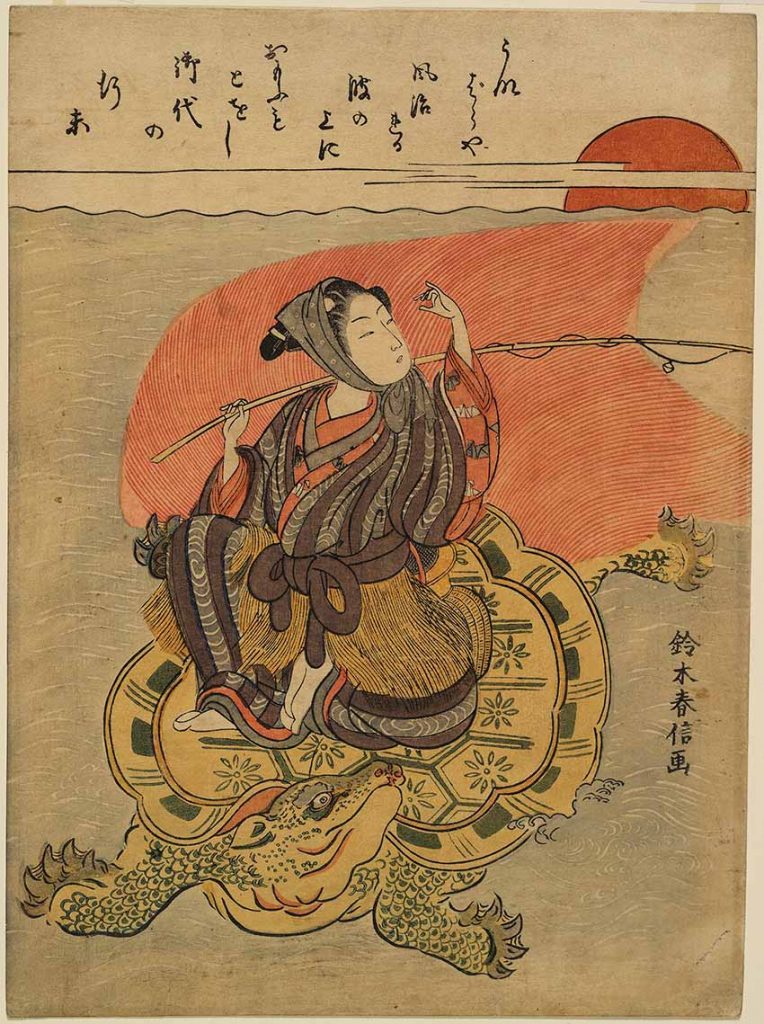This ground-breaking exhibition at the Royal Ontario Museum (ROM) is art oriented, but the art is a bold sociological coverage about the main subject, the wakashu of Edo, the great merchant-class capital of Japan which by the 1760s had become the largest city in the world. Wakashu were the ‘pretty boys’ of the day, the 18th and 19th centuries, and were the objects of sexual desire for both men and women.
A Category of Transvestites
The category of transvestites has existed since antiquity; in almost all cultures and in almost all cases, their role in society was sexual. In many cases, transvestites feel as if they are a female inside and don women’s clothes. In modern times, it has become more well-known that such men can undergo a surgical sex-change operation if so desired. The difference between the wakashu and transvestites today is that wakashu looked somewhat different from women and adult men and their sexual and social roles were different, too.
Onnagata Roles in Japanese Theatre
In Edo Japan, wakashu were included as part of daily cultural life, both sexually and artistically. After the mid-17th century, for example, women were banned from the stage and actors specialising in women’s roles, called onnagata, were sometimes men and sometimes wakashu. Their principal role was in the various fields of entertainment as well as being available on the side for sexual encounters. The population of Edo considered them an integral and normal part of the landscape of the city, an attitude unthinkable in the West, both then and now.
Asato Ikeda, the ROM’s curator of Japanese art, has organised this exhibition as a brilliant social study of another society in another time. She has gathered a stunning display of woodblock prints, ukiyo-e, paintings, illustrated books, ehon, kimono, and armour to illustrate the various societal roles that the wakashu filled.
A Display of Ukiyo-e
The most beautiful part of the exhibition is the display of Japanese ukiyo-e woodblock prints. Ukiyo-e, literally ‘pictures of the floating world’, is an art form that is particularly Japanese in which the subject matter mainly comprises images of actors, courtesans, teahouse waitresses and the like, an area which does not appear in the prints of any other country in the 17th, 18th, or 19th centuries. Why?
Edo Became the Nation’s New Capital
Edo, once a small fishing village, became the nation’s capital in 1603 and quickly became Japan’s economic centre. It lacked the cultured, aristocratic and noble classes, which resided in Kyoto and the proper behavioural ways which permeated all levels of society there. Edo, however, was populated almost entirely of merchants, prostitutes, actors and other members of the lower classes.
Without the elevated culture and behavioural norms of Kyoto, Edo was something of a Wild West with the level of morality that went with it. Ukiyo-e, being an Edo invention, depicted this subject matter, which would have never been allowed in Kyoto. Imagine American or English prints depicting courtesans at leisure, or prostitutes and their attendants parading in public, one will understand how much images of the lower classes (and later landscapes) dominated the genre of woodblock prints in Edo.
Suzuki Harunobu and Utagawa Utamaro
Some of the artists represented in the exhibition are Suzuki Harunobu (1725-1770), Utagawa Utamaro I (1753-1806), Bunro (fl 1800-1810,) and Hosoda Eisui (fl 1790-1823). Harunobu created the world’s first colour-printed woodblocks and the height of his creativity was in the last 10 years of his life.
If one looks closely at the faces in his prints – and the faces of all the other artists as well, one will see that whether the persons depicted are male or female, the faces are basically identical, almost in a one-face-fits-all manner, and mostly androgynous. This is peculiar to Japanese prints, mainly in the period of the 1760s through about 1810.
Wakashu Distinctive Hairstyles
The question remains as to whether each artist used his own style of face for both males and females or the males depicted are wakashu. That question is easily answered by simply looking at the hair styles. Wakashu had a distinctive hair style that identifies them immediately. At the very top of the head is a small, circular shaved spot; the hair on the top of the head is pulled back into a large, almost fan-shaped bun; and there is a ‘mullet’ hanging down from the back of the neck. In the exhibition, one can discern who wakashu is and who is not, regardless of whether they are wearing male or female clothing.
The exhibition, formed to create mild controversy and to make one consider the role/existence of modern ‘trans-genders,’ has been able to use beauty to make its societal point.
BY MARTIN LORBER
Until 27 November, at the Royal Ontario Museum, 100 Queens Park, Toronto, www.rom.on.ca





